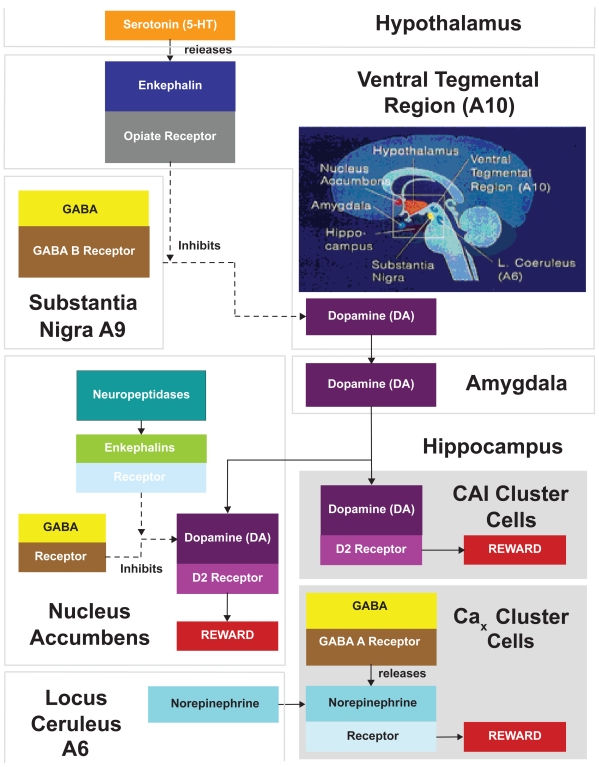Figure 1.
Interactions in brain reward regions. (1) Serotonin in the hypothalamus indirectly activates opiate receptors and causes a release of enkephalins in the ventral tegmental region A10. The enkephalins inhibit the firing of GABA, which originates in the substantia nigra A9 region. (2) GABA’s normal role, acting through GABA B receptors, is to inhibit and control the amount of dopamine released at the ventral tegmental regions for action at the nucleus accumbens. When dopamine is released in the nucleus accumbens, it activates dopamine D2 receptors, a key reward site. This release is also regulated by enkephalins acting through GABA. The supply of enkephalins is controlled by the amount of the neuropeptidases that destroy them. (3) Dopamine also may be released into the amygdala. From the amygdala, dopamine stimulates the hippocampus and the CA and cluster cells stimulate dopamine D2 receptors. (4) An alternate pathway involves norepinephrine in the locus ceruleus whose fibers project into the hippocampus at a reward area centering around cluster cells that have not been precisely identified, but which have been designated as CAx. When GABA A receptors in the hippocampus are stimulated, they cause the release of norepinephrine.

